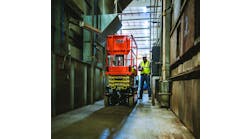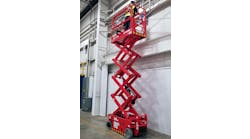In its July issue, RER examined how spiraling costs are affecting manufacturing, rental and supply-chain relationships. As part of its research, RER’s Michael Roth interviewed three executives from Carson, Calif.-based Multiquip Inc: Roger Euliss, president; Mike Howlett, vice president of operations; and Mike Ferguson, vice president of sales. Here are some of their comments.
RER: How much would you say costs have increased over the past year or two, with major increases in the cost of fuel, steel, tires, components, copper and probably every other item used in manufacturing?
Euliss: You are so right about the increases, and you did not include the significant engine cost increases due to EPA and CARB requirements that have hit and will be continuing for some time. The increases experienced over the past year or so vary considerably by finished-good type. In the case of some expendable items that are mostly just steel, we have seen increases well in excess of 50 percent. In other products, while all materials and components have increased, the actual finished product costs are less and have been partially offset by manufacturing and other efficiencies. Our productivity has increased significantly and this has allowed us to control prices to our customers better than we even anticipated. Unfortunately, recent increases are such that our prices will have to be raised sooner rather than later as efficiencies can only go so far in offsetting fuel and commodity costs at the levels we are now seeing them.
To what degree has the cost of fuel affected your business?
Howlett: Fuel costs have hurt all aspects of the business. Container costs on imported items have risen sharply (15 percent to 20 percent) as ocean carriers pass along their increased operating expenses. Freight costs on domestic truck shipments are up even more as fuel surcharges (now approaching $0.70 - 0.75 per mile) are being added by all carriers. These fuel-related costs are very difficult, if not impossible, to recapture over the short term, especially when sales have become much slower. It is also hard to plan for their long term impact on the business as the costs still remain volatile and fluctuate regularly. Beyond this direct effect on our operating expenses, these costs become the main reason of the material cost increases that our vendors are trying to pass along to us.
How seriously have the costs of fuel, copper, steel affected margins?
Euliss: All fuel and commodity costs have increased dramatically, some steel up around 70 percent so far this year alone. So not only is the cost of the commodity much more expensive, so is the cost of bringing it into our manufacturing facility due to fuel costs and fuel surcharges. Our “Lean” initiatives have help offset some of these increases, but certainly not all. We commit to doing all that we can to hold prices stable for a full calendar year and in doing so this absolutely hurts margins. Couple all these supply chain upward pressures with an extremely soft domestic economy and slow sales to the rental industry, 2008 is not rolling out as a very good year at all. Channel partners and end consumers everywhere in our industry should anticipate price increases in 2009, if not before, as manufacturers can absorb only so much for so long.
What are some of the points of contention between manufacturers and rental companies that become exacerbated in the current environment?
Ferguson: The most obvious point of contention between manufacturers and rental companies right now is with regard to inventory and the associated costs. Traditionally, rental companies purchase inventory for fleet replacement and expansion as needed, and for retail sales. Many are now cutting back in this area and the trend is putting more pressure on manufacturers to have readily available equipment close to the customer. This increases warehousing, shipping and transactional costs for the manufacturer and it's hard to raise prices to cover these additional expenses. Actually, we recently received a request from one major rental company to reduce prices if possible in view of the declining rental rates in this soft market. It is tough for everyone involved.
How have all these costs affected your sales to rental companies? I would imagine rental companies are seeking better terms given the cost issues they are facing.
Ferguson: The truth of the matter is longer terms and extra discounts do little to encourage one to buy right now unless there is demand and utilization is good for the product class being considered. Certainly if conditions warrant a purchase, then rental companies are seeking the best deal in terms of value they can get. However, I believe quality and brand acceptance are still top considerations for rental companies. Don't get me wrong, most rental companies and manufacturers alike are experiencing the same pressures of rising costs along with diminishing demand. Everyone is looking to reduce costs and raise rates whenever possible.
It seems to me in the past when manufacturers’ sales to rental companies have dropped, they have tried to sweeten the terms, offering better deals to rental companies with better financing opportunities. I would imagine those kind of financing deals are not easily available given the credit situation?
Ferguson: We at Multiquip are fortunate to have worked with the same financing partner, Allied Financial Solutions for over 20 years. Harry Schneider understands the rental business well and seems to be getting deals financed with little or no change in rejections. We're able to continue to offer some very attractive interest rates through AFS as well as no interest internal financing on shorter terms and floor plans in-house.
How have the expectations of rental companies changed in recent years, and how have these expectations changed the way you do business? How are these relationships and expectations likely to change over the next year in the middle of a market slowdown?
Ferguson: As mentioned earlier, rental companies expect manufacturers to have what they want, when they want it and close by to minimize freight cost and delivery time. After all, rental companies have been opening branches across town to better service their customers for years. That's why Multiquip has seven regional warehouses strategically located across the United States - we want to be close to our customers. We also have another in Montreal, Canada, and will soon open our second location in Western Canada to bring our total to 9 locations in the U.S. and Canada.
Many manufacturers increased manufacturing capacity in recent years. What impact will slower sales to rental have on your company with increased capacity that might not get sold?
Euliss: Multiquip’s capacity has increased significantly over the past several years, but most of this is due to efficiencies realized through “Lean” implementation. Even though rental companies are unable to truly forecast purchase requirements, the “Lean” process allows for much greater flexibility in manufacturing among the various product groups, and this helps keep the burden rate under control. Also, our international business has grown tremendously over these same several years, and this helps offset a good portion of the weak domestic demand.
Do you have any advice for companies struggling through this difficult economy?
Euliss: Any of us who have been in this industry for any time have seen downturns before, and we know that they will eventually end. The key is managing intelligently through the downturn in order to emerge in a position of strength when it does turn up again. Multiquip, and I think most manufacturers, learned and remembers lessons from the last downturn after 2001. We are not making some of the mistakes that we had leading into that soft spot, and we are weathering this storm – “The Perfect Storm” - better. However, given all of the basic economic factors that led us into the current situation, I feel that life after this one ends will forever be different. We have some new lessons to learn, some business models to adjust and a somewhat different future to address. We can and will adjust, and we will continue to be successful. We just cannot continue doing the same things the same way and expect the same good results that worked in the past.





